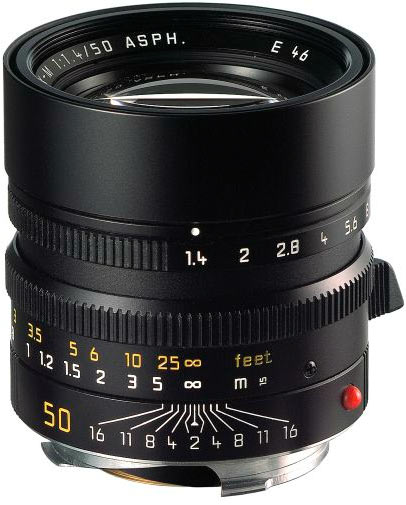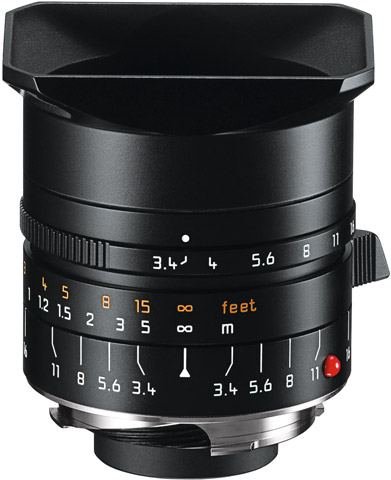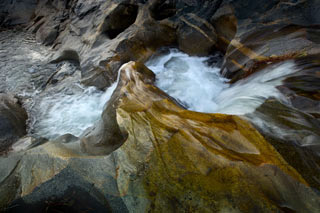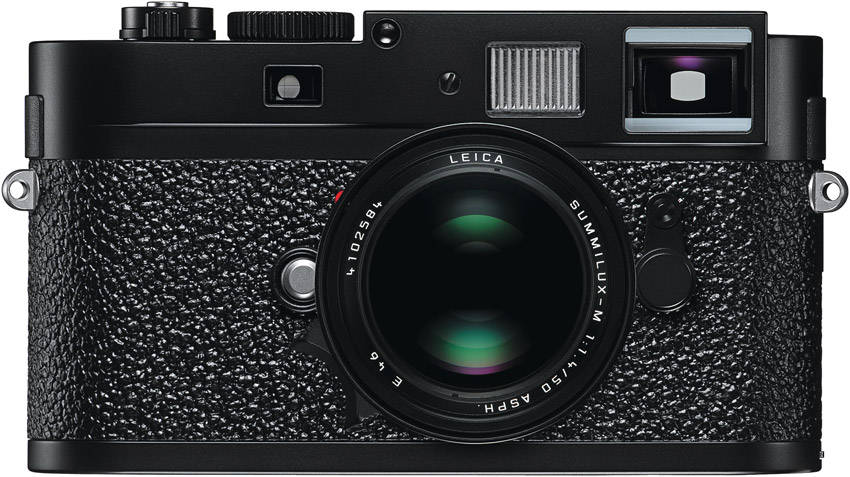Q&A Interview with Leica USA
Recently I posed a series of questions to Leica USA, questions of interest to myself, and that I think are of interest to all Leica M and potential Leica M users.
Like any other company, Leica is constrained in the types of answers that can be given for future products, so while we might all wish for more specifics, the answers naturally can be limited. In that sense, the Q/A is partially to get the issues on the table, even if they cannot necessarily be satisfied at present.
My questions and follow-ons are prefixed by “DIGLLOYD”. See also my Guide to Leica.
DIGLLOYD: The M9 has been a runaway success, leading to shortages of not just the M9, but also every M lens that Leica makes. Who is buying the M system— which countries, what kind of photographer?
Since its introduction, the Leica M9 has become the tool of choice for those who demand the highest standards in image quality and love freedom of composition. As a result, we’ve seen a steady increase in the number of photographers that are becoming Leica owners worldwide.
Our customers appreciate the brand’s qualities that set it apart, namely mastery in optics and mechanics, high-quality design and outstanding craftsmanship. In addition, they are drawn to the M9 and M9-P’s compact size, full frame CCD image sensor and the resulting images that are particularly rich in details.
From our many conversations with customers, we know that M-System owners, both amateur and professional alike, enjoy traveling with their cameras because of the flexibility allowed by their compact, ergonomic construction.
The Leica Akademie, a series of photographic lectures, workshops and experiential learning days introduced in North America last year, is extremely popular with new Leica users. With programming dedicated solely to the M-System, it provides customers with an opportunity to discover additional lenses. We are seeing that most M9 and M9-P owners like to have 3-4 lenses on average, leading to high demand for Leica lenses.
DIGLLOYD: On the travel question, that is indeed a “killer” feature of the M9 system. I can ride my mountain bike with a hip pack containing 5 lenses with the full-frame M9, and the whole kit with the pack is under 5 pounds. No other system offers that flexibility with a full frame sensor.
As for lenses, I would agree that 3-5 lenses is about right, and one lens is just right some of the time too.
Buyers might unfortunately include more than a few dilettantes looking for a status symbol. But if that is what it takes to keep Leica healthy, I’m all for it.
DIGLLOYD: To what extent does Leica see the M lens line being used for video applications, such as on RED?
While this is an option for video applications, Leica lenses are designed to best perform on Leica equipment and customers may experience limitations when combining them with equipment from other manufacturers.
DIGLLOYD: I am hearing of developing demand from LensRentals.com for Leica M lenses.

World’s best 50mm lens
(and a ~1-year waiting list)
DIGLLOYD Given the rare in-stock status of M lenses, what advice does Leica have for buyers, especially here in the USA?
All Leica lenses are hand-crafted in Germany and go through meticulous manufacturing processes to uphold the quality and precision defined by Leica and expected by our customers. In the age where technology almost inevitably means mass manufacturing, Leica products are still made with exacting precision by the hands of highly-trained technicians. With such attention to detail, it is often hard to instantaneously meet the demand of customers seeking the finest lenses available, especially the fastest lenses that are extremely popular as a result of their uniqueness and superior image quality.
That being said, Leica Camera regrets the often difficult situation our customers experience in acquiring their dream lenses. We are actively working to increase Leica's production while keeping in line with our core goal of providing the best optical performance possible.
We invite customers to view the "Leica Lenses" video, providing a rare behind-the-scenes look at the craftsmanship and making of Leica lenses in the production facilities of Leica Camera AG in Solms, at: https://en.leica-camera.com/photography/m_system/m_cameras
DIGLLOYD: Indeed, hand-crafted lenses which require years of training to produce cannot be increased in production quickly. The used and overseas markets are one way M users might find a desired lens, and don’t rule out older lenses and/or Zeiss ZM or Voigtlander M-mount lenses, at least for placeholders until the desired Leica M lens can be obtained.
DIGLOYD: Leica M lens line price increase of about 7% for 2012 follows similar bumps over the past several years. Does Leica have any guidance on why prices are being raised and whether this trend will continue?
Leica's focus remains first and foremost on providing a premium customer experience and products of outstanding construction and performance quality. Pricing for each lens depends on its individual design and production requirements.
Due to a significant rise in the cost of certain materials used to manufacture Leica lenses, Leica has been forced to increase its lens prices accordingly. The increase in cost is particularly related to certain types of specialty glass containing rare-earth materials. Rare-earth materials are also used to polish optics in the production of lens elements. Further cost increases have resulted from the rise in base pricing of noble metals as well as the cost of labor.
DIGLLOYD: I have followed the rare earth market for some years now. Cerium oxide (glass polishing) and Lanthanum oxide (some types of glass) have skyrocketed in price enough to make any hedge fund manager green with envy. Lutetium might be used for certain special glass types, and perhaps praseodymium. Some of these elements are up 1000% or more.
DIGLLOYD: I have conversed with a number of frustrated Leica M prospective and actual buyers who have had to abandon the M experience because of visual acuity (focusing) just not being possible for them. Precise framing is a challenge, and focus accuracy remains a challenge under some circumstances (eg subject matter and/or dim light), even for those with 20/20 eyesight.
Can we expect to see any developments that make the Leica M experience more accessible to all photographers, e.g. a hybrid EVF or Live View or similar technology?
Leica Camera maintains a position at the forefront of optical technology and continuously investigates new technologies as they become available. Our goal is to study these new technologies to deliver improved customer experience with reliable advances.
We have seen the M-System come a long way since the introduction of the Leica M8 in 2006, as evidenced by the renewed success of the M9. With the M9, we united over 50 years of continuous technical improvements to the system with the best in cutting-edge digital technology. Most recently, the Leica M9 Titanium was released, featuring new advancements made in the rangefinder of our M-System cameras.
DIGLLOYD: I expect that we will see new developments, but perhaps taking longer than users might wish.
DIGLLOYD: The new Fuji X-Pro1 and Sony NEX_7 are generating excitement, appealing to a wide audience. How does Leica view the development of ALLVIEW (any lens live view) cameras in relation to the Leica M camera body and the M lens line?
While Leica Camera does not comment on other manufacturers' products, it is exciting to see the interest in product categories which were pioneered by Leica. The Leica X1, with its superior APS-C sensor and superb lens quality, follows in the footsteps of our flagship M-System and has proven to be an extremely popular camera system.
DIGLLOYD: Interesting comparison. But the X1 is not an ALLVIEW camera.

World’s best 21mm lens
DIGLLOYD: Leica M glass surely has deep performance reserves in excess of what the existing sensor of the M9/M9P can record. This is a testament to Leica optics, but it also feels frustrating when there is far more detail that could be recorded.
How does Leica plan on taking the digital M forward so that an investment in M glass rewards the buyer of M optics even more?
Again, Leica Camera is continuously investigating new technologies that may lead to reliable advancements for the M-System. However, our main focus remains on providing our customers with the invaluable confidence and assurance that they are using the finest cameras and optical photographic accessories available in the world, rather than forcing change for the sake of change.
DIGLLOYD: This is a curious response, as I would not consider higher resolution “change for the sake of change” when in fact the lenses can deliver MUCH more than the M9 sensor can record. In film days, was a new film with higher resolving power and/or with tighter grain “forcing change for the sake of change” also?
How about change for the sake of lower noise, or change for the sake of exploiting the deep optical reserves in Leica M lenses?
DIGLLOYD: The M9 rear LCD offers low resolution by today's standards, and worse, the M9 shows a blurry zoomed-in image, so that verifying accurate focus post-shot on the rear LCD remains impossible to this day.
Does Leica plan to address this shortcoming somehow? For example, by providing a firmware update that would provide an image-zoom capability that would allow the shooter to verify pinpoint focus, especially at f/1.4 and f/2?
For decades, Leica customers have appreciated these cameras because of their ease of use and extremely bright rangefinder. When designing products, our dedicated engineers focus on processing speed in order to ensure ease of use and deliver exceptionally fast speed, attributes that are key to the advancement of the Leica M-System.
A compact LCD screen like the one on a Leica M9 is a good aid for quick reviewing after capture. Leica recommends utilizing high resolution monitors to review the superior performance of Leica lenses and sensor technology.
DIGLLOYD: the first step in fixing an issue is to acknowledge it as an issue. The LCD resolution is not the core issue; rather it is the low quality (blurry) image presented on the screen when zoomed in that makes focus-accuracy check impossible.
Readers respond
Reader comments are their own, and should not be take as reflecting my own views.
Note: when writing me, please take the time for proper spelling and capitalization and brand names capitalization and grammar.
Scott M writes:
It was very interesting the Leica Q&A on your blog. I have to say though that their response to your monitor screen question was little short of ludicrous - reviewing the images on a high-res monitor sort of defeats the purpose of having a compact, lightweight travel kit, does it not? It also seems to imply that the M-system is just so awesome you don't need to worry about gauche, pesky things like reviewing your images until you get home - at least that's how it reads to me.
Maybe there is some inherent processing weakness in the M8/9 that prevents rendering a full-res JPG fast enough for usable image review, even if it can write it to the card? Their statement about "exceptionally fast [processing] speed" is a little disingenuous too.
3" VGA (921,600 dot) screens have been around since at least 2007 (I think the D3 or D300 was the first) and are now found on some of the most basic DSLRs costing less than 1/10 of the M9 - while the ol' 230,000 dot screen is now standard fare on a <$100 P&S.
DIGLLOYD: Indeed. My gripe is not so much with the screen as the fact that what is displayed on it is ultra poor quality (when zoomed in). I had speculated on that very notion today (processing power) with Leica on the phone today, and I hope to hear something back on that issue. After all, if it’s possible to fix in firmware, it would remove a big sore point in using the M9.
As for the LCD screen, I believe Leica had some severely restricted choices based on the availability at the time, and the projected volume. Leica cannot commit to buying a million screens at a time, and when the M9 was released, Leica was thinking tens of thousands most likely. With the M9 a runaway hit, perhaps the next model will garner more optimism from the designers.
Paul I writes:
 Cascadel © Copyright 2012 Paul I
Cascadel © Copyright 2012 Paul IDidn’t think I’d write back so soon, but have to comment…
I just finished making a 30” print from my M9 when I saw your great interview with Leica. Nice of them to talk to you. I was especially impressed with their comment:
“However, our main focus remains on providing our customers with the invaluable confidence and assurance that they are using the finest cameras and optical photographic accessories available in the world”
Yes, the lenses are wonderful, as the prints clearly show. You just published a crop of one of the many images I had to discard because of highlight posterization at ISO 80. Was that caused because I didn’t spend $1,000+ to upgrade to the improved titanium model?
And I second Scott M’s remarks about the screen, but unfortunately my desktop computer with a high resolution screen didn’t fit in my backpack. The manufacturing cost of a much improved screen (as in my Canon S90 or iPhone 3G, let alone the 4S) is trivial. The arrogance in making the above statement after changing the color of the red dot instead of addressing functional issues is what will cause many of us to look for alternate bodies on which to mount our Leica glass.
DIGLLOYD: the posterization problem is sensor related, and probably nothing much can be done with a CCD sensor as is used in the M9; there are other oddball issues as I show in my Guide to Leica. It is rare for this to be an issue, but it often can be with water; I suppose I have learned to accept it, and to expose like slide film (one reason I often “push” during my RAW conversions).
As for the LCD screen, Canon and Apple deal with millions at a time, and at the time the Leica M9 was designed (3-4 years ago), no doubt Leica had to make a decision based on unfavorable pricing for very small quantities (eg tens of thousands at most). Leica could not assume they’d have a hit, and simply made a rational business decision. And remember that in 2009, Leica was not in great shape financially. But today, with the M9 in great demand, and Leica financially invigorated, that logic could be revisited, since Leica has ample data at this point.
Andrew T writes:
Many thanks for raising the M9 issues with Leica, and sharing the interview with us. Many reviewers fail to mention the downsides to M9 ownership, so subscribing to your "Guide to Leica" has been invaluable for me.
I understand why Leica gave corporate answers during the interview, but hopefully they will listen and address these issues. I`d love to buy an M9, but my poor short-sighted vision means that I will only be able to use M lenses on an ALLVIEW camera. Unfortunately, if Leica do not address the M9s shortcomings with the next model, it will still sell very well, simply because it`s a "Leica"!!!
DIGLLOYD: there are up to +3 diopter eyepieces for the Leica M9. You would have the same issue with an EVF, and anyone in their mid-40s has an increasing (year by year) issue with presbyopia with respect to the rear LCD.
David C writes:
I thought their response in re crappy LCD performance was awfully weak. your defense in re number of purchases, yeah, maybe, but what is the difference in unit cost? Please don't tell me that cost is a big consideration as part of the whole $$$$ M9 package. and how about upgrading it now then? I don't see any reason a same physical-sized improved LCD couldn't be retrofitted along with firmware. would *you* bite the bullet and pay $300 for a better LCD? You could get a good estimate of the real cost by asking Canon repair what it would cost to replace the LCD on a 60D (very big, articulated, and very high res) or Nikon for one of their big LCDs.
DIGLLOYD: context-dropping is always a poor basis for understanding complex situations.
Roy P writes:
I just read your interview with someone at Leica. I know companies are reluctant to say much about future products or features. However, I find Leica’s responses to your questions rather condescending, because you were raising many important issues that are of concern to all users of M digital cameras and lenses.
Especially, to your pointed question about the frustrations of M camera users with respect to composition, focus, usability, etc., their responses failed to even acknowledge your concerns as relevant, or demonstrate they even comprehended the issues (witness the suggestion to carry a high resolution monitor with you!).
I would at least feel a little better if Leica had responded with something like “Yes, we’re acutely aware of it, of course, and our engineers are looking at it.”
I hope Leica realizes that they are so good in optics that the M lenses have now exceeded the capabilities of the M9, and possibly, the rangefinder as a camera paradigm. There is no point in spending $5,000-$10,000+ on M lenses if the camera deficiencies undermine the expensive optics. So Leica has to provide a reasonable roadmap to how the M line will evolve.
At the same time, there is a furious pace of evolution taking place in “ALLVIEW” cameras (mirrorless + EVF), and very soon, there will be ALLVIEW cameras with a full frame sensor for under $2000 that will work with Leica M and R lenses, and solve most of the challenges with a rangefinder.
In fact, ALLVIEW camera possibly pose an existential challenge to rangefinders: Is the rangefinder as a camera paradigm on its last legs?
So that leaves loyal Leica M users with important questions: How does Leica plan to address some serious functional shortcomings in the M9? In fact, what is the future of the M line? Does Leica have any plans to introduce its own ALLVIEW camera?
Offering scratch resistant glass upgrades to cover the crappy LCD on the M9, or offering the M9 in Titanium are irrelevant to higher image quality or greater usability, or getting the most out of the optics of the M lenses.
DIGLLOYD: I raised my concerns over two years ago in my review of the M9, now in my Guide to Leica. The key issues have never been acknowledged as important, or even acknowledged as issues (“thousands of users are happy with the M9” has never satisfied me, as it is a self-defeating evasion of reality). It is frustrating, but as I have no direct contact at the Leica factory, I have no way to know what the thinking actually is over in Solms.
Leica has out there a loyal base, at least part of which considers it blasphemy to offer constructive criticism— a (very) few readers of my M9 review have emailed me to say that my raising of these issues is a “rant”.
So far, Leica can sell all the M9 bodies it can produce. That might change in 2012, especially if the right ALLVIEW camera comes along that works well with wide angle lenses. Perhaps the Fuji X-Pro1 will be that camera, something I aim to answer definitively. But until a full-frame camera without ray-angle issues arrives, the Leica M9 remains the only camera that can deliver high quality results on 28mm and wider Leica M lenses.































